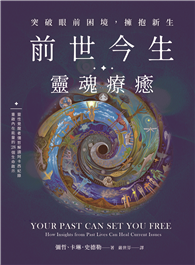Literary scholarship on India’s epic traditions has long focused on the Sanskrit classics - the Mahabharata and the Ramayana - thereby excluding works in Tamil. Now, the esteemed poet R. Parthasarathy offers a memorable new translation of the renowned Tamil poem the Cilappatikaram, one of the world’s literary masterpieces and India’s finest epic in a language other than Sanskrit.
Traditionally believed to have been composed in the 5th century C.E. by Ilanko Atikal, a Tamil prince, the Cilappatikaram - which means "the epic of an anklet" - is the compelling love story of Kannaki and Kovalan. The anklet is the emblem of the goddess Pattini, and the poem depicts the transformation of Kannaki into the goddess. Parthasarathy’s introduction examines the poem in a comparative perspective with reference to the Sanskrit and Greek epics, and proposes that Ilanko rewrites the epic tradition by subverting its essentially androcentric bias. The postscript discusses the poetics of the Tamil epic in the light of the two great categories of Tamil discourse: okom, "inside," and puram, "outside," which represent two of the three distinct phases through which the narrative moves - the erotic and the heroic. To these, Ilanko adds a third phase, the mythic (puranam).
The poem is divided into three books, named after the capitals of the three Tamil kingdoms that constitute the poem’s setting. Love in all its aspects is explored in "The Book of Pukar." "The Book of Maturai" retells the myth of Kannaki’s apotheosis into the goddess Pattini. The heroic aspects of kingship are the subject of "The Book of Vanci."
The Cilappatikaram relates the story of Tamil civilization, but it is also a poem about marriage and family. Considered the Tamil national epic, it spells out in unforgettable poetry the issues that humanity has always confronted: love, war, evil, fate, and death, which have been the special concern of the epic from the beginning of time.
| FindBook |
|
有 1 項符合
Ilanko的圖書 |
 |
$ 2220 | The Cilappatikaram of Ilanko Atikal: An Epic of South India
作者:Atikal,Ilanko/Parthasarathy,R.(TRN) 出版社:Columbia Univ Pr 出版日期:1994-11-10 語言:英文 規格:平裝 / 3.2 x 15.2 x 23.5 cm / 普通級  看圖書介紹 看圖書介紹
|
|
|
圖書介紹 - 資料來源:博客來 評分:
圖書名稱:The Cilappatikaram of Ilanko Atikal: An Epic of South India
|



![噢!原來如此 有趣的天文學 [彗星增訂版] 噢!原來如此 有趣的天文學 [彗星增訂版]](https://cdn.cite.com.tw/images/1/1GP038.jpg)

![塔木德:猶太人的致富聖經[修訂版]:1000多年來帶領猶太人快速累積財富的神祕經典 塔木德:猶太人的致富聖經[修訂版]:1000多年來帶領猶太人快速累積財富的神祕經典](https://media.taaze.tw/showLargeImage.html?sc=11100697818)




